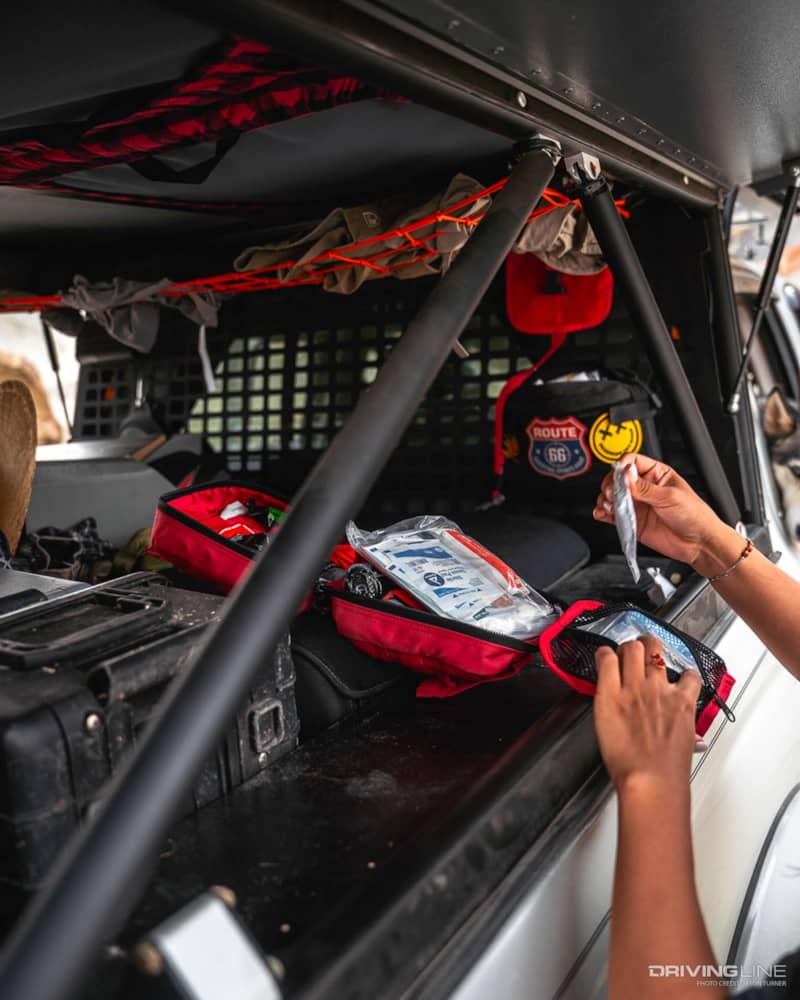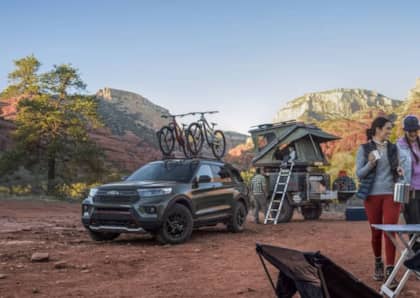Tips for Packing Gear for an Overland Trip
Overland trips promise a thrilling adventure where you'll traverse diverse landscapes, encounter remote destinations, and experience the freedom of the open road. Whether you're planning a cross-country expedition or just a trip close by, efficient and thoughtful packing is crucial to ensure a smooth and enjoyable journey. This article will guide you through the essential tips for packing for your next overland adventure.

1. Prioritize Versatility:
Space is a premium in most overland vehicles, so focus on packing versatile items that serve multiple purposes. For instance, invest in a high-quality, durable tent that is easy to set up and suitable for various weather conditions. Some tents come with optional insulation and could be important depending on the temperatures you camp in. Opting for convertible clothing that can be adjusted to accommodate different temperatures, such as zip-off pants and multi-layered jackets might be something worth considering as well. This same concept can also work with cookware that can be stacked or packed in smaller forms.

2. Organize Efficiently:
Create a packing list and group together items according to their use. Keep essential items like your first aid kit, fire extinguisher, flashlights, toiletries, and camping gear within easy reach. Mounting essential items in easy to reach places can make all the difference in emergency situations. Labels also can be very helpful when your passengers or friends need to find something in your vehicle if you’re unavailable. Utilize packing cubes, cases, or waterproof bags to keep your belongings organized and protect them from dust, moisture, and potential spills. Label each bag to know its contents at a glance, saving time and effort when searching for specific items. MOLL-E Panels, hard mounted storage options, and exterior mounted gear can all be very useful to spread gear throughout your vehicle to maximize on real estate. Having exterior cases mounted to your vehicle can provide a perfect place for light storage for jackets, floaties, towels & more to help provide more interior room in your vehicle.

3. Pack Light:
Prioritize items that are essential for your comfort, safety, and well-being. Leave unnecessary items behind and focus on the experiences you'll gain rather than the material possessions. Filling every nook and cranny may be something we all would like to do, however, any weight saved means your vehicle will perform better during your adventures.

4. Don’t Skimp on Safety & Recovery Gear:
When packing for an overland trip, safety should be a top priority. Ensure you have a well-stocked first aid kit containing bandages, antiseptic, pain relievers, and any necessary prescription medications. Carry a fire extinguisher, a multipurpose tool, some form(s) of maps, a comprehensive emergency kit, flashlight, emergency blanket, and a means of communication such as radios or even a satellite phone or personal locator beacon. A fire extinguisher that is electrical safe is also recommended. A full tool kit is preferred to be able to tackle any type of emergency fix that you might run across. Some items we recommend: Zip Ties, Ratchet Strap, Traction Boards, Kinetic Rope, and Soft Shackles.

It’s also important to inform friends or family (that aren’t coming with you) of where you’re going.
5. Cooking Essentials:
If your overland trip involves camping or cooking your meals, pack a compact and efficient camping stove, lightweight cookware, and essential utensils. Focus on non-perishable food items, such as dried fruits, nuts, canned goods, and freeze-dried meals, which can go longer periods without refrigeration. If you have a portable fridge, plan your meals ahead of time so you can save space.

6. Water and Hydration:
Access to clean drinking water may not always be guaranteed during an overland journey. Carry ample water storage containers and purification solutions like water filters or purification tablets for the amount of time you expect to be off the grid. Staying hydrated is vital for your well-being, especially in hot and arid regions.

7. Spare Parts and Tools:
When traveling in remote areas, breakdowns are a possibility. Pack essential spare parts for your vehicle, such as fan belts, fuses, and tire repair kits. Include a comprehensive set of tools, including wrenches, screwdrivers, and pliers, to perform basic repairs on the go. Don’t forget a jack of some kind. The trusty bottle jack or scissor jack your vehicle comes with is very useful, but having a second one, like a Pro Eagle, can prove very convenient as well. We’ve seen them used as a wheel when someone lost a hub in an accident.

8. Clothing for All Potential Weather:
Prepare for various weather conditions by packing clothing suitable for both hot and cold climates. Include rain gear, sturdy walking or trail shoes, and comfortable clothing for long drives. Dressing in layers allows you to adapt to changing temperatures more effectively. Packing breathable clothing and sun protective hats during hot weather can be very useful as well.

9. Respect the Environment:
As an outdoor adventurer, you'll interact closely with nature, so it's vital to practice responsible and sustainable travel. Minimize waste by using reusable containers and water bottles. Dispose of trash properly and follow “Leave No Trace” principles to preserve the beauty of the places you visit. If you plan to shower at any point, please consider buying biodegradable personal hygiene products. Also make sure that you do your dirty business over 100 feet away from any body of water or running water. Bringing a portable ‘loo can be worth taking as well. Just make sure you’re bringing extra doodie bags and be sure to pack that out with you. This is where a rear mounted tire bag can come in handy! If you fancy one, they can be a great way to bring in a bundle of wood and store your trash to take out with you on your way out. Leaving areas better than you found it is definitely a good credo to live by. We want to keep places open and clean for the next time we visit and for others to enjoy.

10. Overlanding With Pets
If you have a four-legged friend you travel with, don’t forget to bring their essentials as well. This can be food, bowls, bedding, doodie bags, and a leash. Depending on their breed and the weather, you might want to consider adding a blanket or clothing to keep them warm. Refer to our adventure pup guide we released for more info on bringing your pup along with you on your adventures.

By following these essential tips, you'll be well-prepared for any overland adventure, and you can focus on exploring, immersing yourself in new cultures, and creating unforgettable memories. Remember, flexibility and a positive attitude are just as crucial as your packing skills. Embrace the journey, savor the moments, and let the open road lead you to new horizons.
Safe travels!











